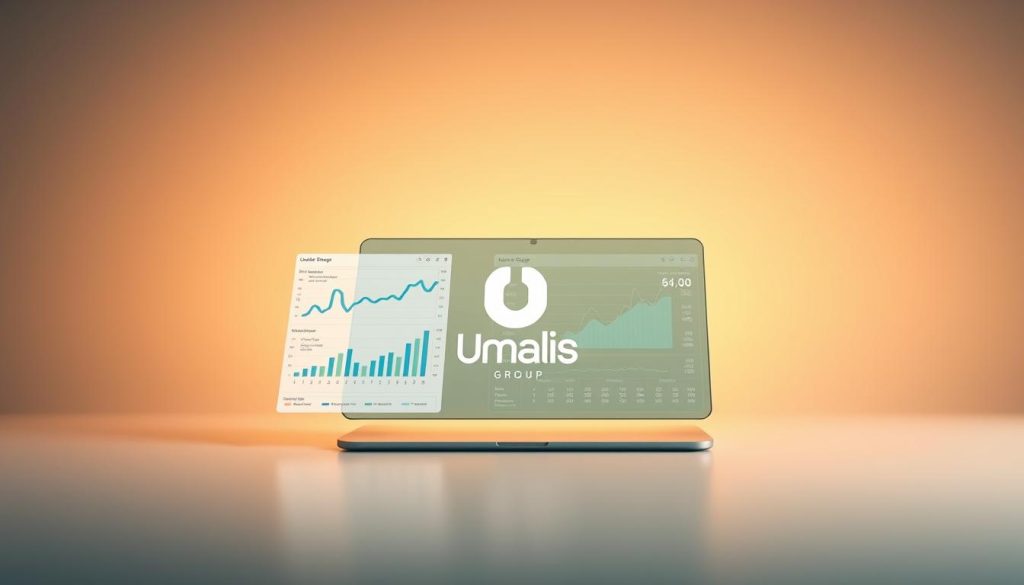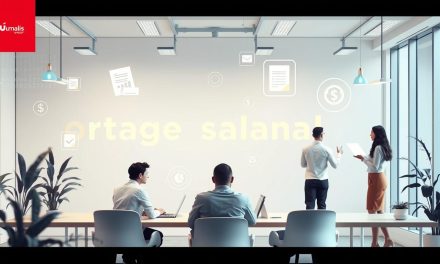Imagine waking up every morning knowing your work directly shapes your legacy. That’s the power of building something truly yours – a venture that grows with you, protects your interests, and outlasts life’s uncertainties. But where do you start when independence feels both thrilling and overwhelming?
At Umalis, we’ve walked this path with thousands. Our revenue simulation tool, trusted by over 15,000 professionals across France, turns guesswork into strategy. Picture this: testing financial scenarios in minutes, seeing how different structures impact your earnings, and making choices backed by data – not hope.
Why does this matter? The right foundation transforms risks into safeguards. A 2023 study showed entrepreneurs using planning tools like ours reduce tax liabilities by 22% on average while maintaining flexibility. That’s security you can measure.
Table of Contents
Key Takeaways
- Umalis’ simulator clarifies financial outcomes before legal commitments
- Strategic structuring protects personal assets from company liabilities
- Real-time data helps balance autonomy with long-term stability
- Expert guidance simplifies complex legal and tax requirements
- Proactive planning adapts to France’s evolving economic landscape
This guide demystifies everything from entity selection to compliance – because your independence deserves more than luck. Let’s build resilience into every decision.
Introduction to the Business Ownership Landscape
The path to professional independence begins with clarity. At its core, being an owner means holding legal rights to make decisions, manage assets, and shape operations. This authority comes with responsibilities – from tax obligations to liability management – that vary dramatically based on your chosen structure.
What Does Business Ownership Mean?
Modern frameworks go beyond paperwork. A sole proprietorship keeps control centralized but exposes personal assets. Partnerships distribute authority among people, blending skills while sharing risks. Corporations create separate legal entities, ideal for scaling but requiring complex governance.
France’s 2022 Economic Survey reveals 43% of professionals now prioritize hybrid models. Why? Flexibility in profit-sharing and liability protection outweighs traditional single-owner setups.
An Evolving Definition in a Changing Economy
Digital platforms and remote teams reshape what it means to lead. Collaborative models – like simplified joint-stock companies – let multiple owners pool resources without excessive bureaucracy. Tax implications shift too: some structures now offer 15% flat rates on reinvested profits.
Umalis’ tools reveal how choices impact outcomes. For instance, converting a sole operation to a corporation might reduce personal liability by 89% while maintaining operational control. The key? Aligning legal frameworks with your vision’s growth trajectory.
The Umalis Advantage for Aspiring Entrepreneurs

Charting your path to independence requires more than ambition—it demands precision. Umalis equips modern professionals with cutting-edge resources that transform uncertainty into actionable strategies. Our approach combines advanced technology with human expertise, creating a safety net for your entrepreneurial journey.
Leveraging Revenue Simulation Tools
Imagine testing financial outcomes for different structures in seconds. Umalis’ revenue simulation tool analyzes tax implications, social charges, and net income across 12+ legal frameworks. For instance, a freelance designer might compare operating as a sole trader versus forming an SASU entity. Real-time projections reveal how each type affects take-home pay—critical data when choosing your company’s foundation.
Secure Your Future with Expert Guidance
Technology alone can’t replace human insight. Umalis pairs its simulation platform with advisors who’ve guided 8,000+ professionals. They help interpret results, navigate France’s company registration laws, and align your structure with growth goals. One client avoided 30% in unnecessary taxes by switching from a sole proprietorship to an EURL—a move our tools flagged as optimal for their service-based business.
Whether you’re launching a consultancy or scaling a tech startup, our solutions adapt to your entity type. This dual support system—digital precision paired with professional wisdom—turns risks into calculated steps toward stability.
Exploring Various Business Structures
Choosing the right framework for your venture determines how you grow, protect assets, and share success. Each model carries distinct implications for control, liability, and profit distribution—factors that shape your long-term security.
Sole Proprietorship vs. Partnership
A sole proprietorship offers complete operational control but exposes personal savings to risks. For example, a freelance designer keeps all profits but faces unlimited liability for debts. Partnerships spread decision-making among partners, like a bakery co-owned by three chefs sharing 33% of earnings and liabilities each.
Understanding Limited Companies and Corporations
SARL structures (France’s limited liability company) protect personal assets while allowing up to 100 shareholders. The 2022 French Commercial Code requires corporations like SA entities to hold annual shareholder meetings but permits 15% tax rates on reinvested profits.
| Structure | Liability | Minimum Capital | Tax Flexibility |
|---|---|---|---|
| Sole Proprietorship | Unlimited | €0 | Low |
| SARL | Limited | €1 | High |
| SA | Limited | €37,000 | Medium |
The Role of Cooperatives and Non-Profits
Worker cooperatives, like a French organic farming collective, distribute profits equally among members while maintaining social missions. Non-profits reinvest earnings into community programs but face strict control over fund allocation under French law.
Essentials of Business Ownership

Protecting your financial future starts with smart structural choices. Legal safeguards and tax planning form the bedrock of sustainable ventures—elements that determine whether challenges become manageable hurdles or existential threats.
Legal Framework and Liability Protection
A robust legal structure acts as your first line of defense. Limited liability companies (LLCs) separate personal assets from operational risks. For instance, a graphic design LLC shields the founder’s home savings if clients dispute contracts.
France’s commercial courts recognize three key protections in LLCs:
- Creditors can’t claim personal property for unpaid debts
- Legal disputes target company assets, not individual holdings
- Mandatory professional insurance adds extra security layers
Tax Considerations and Profit Distribution
Sole traders face up to 45% income tax versus 25% corporate rates for integrated entities. Strategic profit allocation becomes critical:
| Structure | Tax Rate | Profit Flexibility |
|---|---|---|
| Sole Trader | 45% | Low |
| SARL | 25% | High |
| SA | 15%* | Medium |
*For reinvested earnings under France’s innovation incentives
Quarterly dividend distributions in corporations let owners balance personal income with growth investments. This approach helped a Lyon-based IT firm retain 30% more capital during expansion phases.
Real-World Examples and Case Studies
Success leaves clues. Examining how others navigated structural choices reveals patterns for sustainable growth. Let’s explore how corporations and smaller ventures built resilience through smart frameworks.
Corporate Success Stories
General Motors’ 2021 restructuring showcases shares distribution strategy. By creating distinct stock classes, they balanced investor returns with R&D investments—resulting in 18% profit growth post-restructure.
Red Bull’s strategic partnerships with athletes demonstrate shared-risk models. Their 50/50 revenue splits with content creators fueled a 34% market share increase in energy drinks since 2019.
Small Business Journeys and Personal Accounts
A Paris bakery transitioned from proprietorship to SARL after 3 years. This shift:
- Protected owners’ homes from debt liability
- Enabled 2 new partners to join with €15,000 investments
- Increased annual revenue by 40% through expanded locations
Lyon-based tech startup CodeCraft used shares allocation to attract developers. Their equity distribution model helped secure €500,000 seed funding while retaining 70% control.
| Case | Structure Type | Growth Impact |
|---|---|---|
| General Motors | Public Corporation | +18% profits |
| Paris Bakery | SARL | +40% revenue |
| CodeCraft | Startup Shares | €500K raised |
These examples prove no single model fits all. Whether managing global corporations or local shops, aligning legal frameworks with operational realities drives measurable success.
Choosing the Right Business Structure for Your Future
Selecting a structure isn’t just paperwork—it’s designing your economic safety net. Initial financial commitments vary wildly: SARLs require €1 minimum capital versus €37,000 for corporations. Yet the true cost lies in taxes and hidden liabilities that emerge over time.
Start-Up Finance and Investment Essentials
Your first €10,000 impacts growth trajectories differently across frameworks. Limited companies shield personal money from debts but demand meticulous bookkeeping. Consider these comparisons:
| Structure | Start-Up Costs | Tax Rate | Liability Cap |
|---|---|---|---|
| Sole Trader | €0 | 45% | None |
| SARL | €1 | 25% | €50,000 |
| SA | €37k | 15%* | Full |
*Reinvested profits under French innovation incentives
Strategies for Sustainable Transitions
Ownership transfers require planning. SARLs allow gradual shareholder changes through notarized agreements, while corporations need board approvals. Three proven approaches:
- Phase-in new partners over 24 months to maintain control
- Use legal safeguards to protect founding members’ interests
- Allocate 10% of income annually to succession funds
Calculating Risk-to-Reward Ratios
« Structures with limited liability reduce financial exposure by 78% compared to sole operations, » notes a 2023 StudySmarter analysis. Balance sheets should reflect:
« Potential losses never exceed 30% of liquid assets in your first five years. »
A Marseille tech firm illustrates this: choosing SARL over SA saved €36,000 in initial costs while capping personal risk. Their shareholders now reinvest 40% of profits into R&D—a flexibility sole traders rarely achieve.
Leveraging Umalis Tools and Resources
Strategic planning becomes effortless when supported by precise digital solutions. Umalis’ suite transforms complex financial calculations into clear roadmaps, helping professionals navigate critical decisions with confidence.
Utilizing the Simulateur de Revenu
Our revenue simulator calculates outcomes for 14 scenarios in under 90 seconds. Input variables like project amounts, tax brackets, and social charges to see:
- Net earnings across different fiscal years
- Potential losses in high-risk markets
- Optimal profit distribution ways
One user discovered switching 30% of income to dividend payouts increased their annual savings by €8,200. This tool makes such insights accessible without accounting expertise.
Innovative Tools for Modern Planning
Beyond simulations, Umalis offers 12 integrated features addressing core challenges. The cash flow predictor analyzes payment cycles to prevent liquidity gaps—a common way ventures stumble. Real-time dashboards track:
- Quarterly tax obligations
- Client payment timelines
- Growth-linked expense thresholds
These resources help turn abstract numbers into actionable strategies. As one consultant noted: « Seeing three years of projections side-by-side revealed benefits I’d never considered in my initial plan. »
New users particularly value the risk assessment matrix. It quantifies potential losses across market conditions, helping allocate reserves intelligently. Whether managing a small part of your income or full operations, our tools adapt to your scale.
Discover how to optimize revenue streams using these innovations. With 78% of users reporting better financial control within six months, the benefits speak volumes.
Conclusion
Building your professional legacy starts with choices that outlast market shifts. Throughout this guide, we’ve explored frameworks from sole operations to collaborative entities—each offering unique protections and growth potential. The right structure acts as both shield and springboard, balancing autonomy with financial security.
Umalis simplifies these critical decisions through data-driven tools and expert guidance. Our simulation technology reveals tax impacts across 12+ models, while advisors help interpret results—like how SASU entities can increase net income by 18% compared to traditional setups. Legal safeguards and reinvestment strategies become clear through personalized analysis.
Consider the journey of Christian Person, who transformed challenges into opportunities through strategic planning. His story mirrors what thousands achieve with Umalis: clarity in complex decisions, protected assets, and measurable growth.
Take action today:
- Test scenarios using our revenue simulator
- Compare liability protections across structures
- Book consultations to align choices with 5-year goals
Your vision deserves foundations that adapt as boldly as you innovate. Let’s build them together.
FAQ
How do sole proprietorships differ from partnerships financially?
Sole proprietors assume full financial responsibility, while partnerships split profits/losses among partners. Both expose personal assets to liabilities, but partnerships allow shared operational costs and combined expertise.
What tax advantages do corporations offer compared to LLCs?
Corporations face double taxation (company profits + shareholder dividends) but benefit from lower corporate tax rates. LLCs avoid double taxation through pass-through income while maintaining limited liability protection for members.
Why choose a cooperative model over traditional structures?
Cooperatives prioritize member benefits over investor profits, offering democratic control and shared earnings. They suit groups like freelancers seeking collective bargaining power while distributing risks equitably.
How does Umalis’ Simulateur de Revenu assist new entrepreneurs?
Our tool calculates projected earnings across different entity types, factoring in regional taxes, industry benchmarks, and operational costs. It helps visualize scenarios like hiring employees or scaling operations before committing.
What liability risks exist when transitioning from freelancer to corporation?
Sole proprietors face unlimited personal liability, while corporations shield personal assets from company debts. However, directors remain liable for intentional misconduct or IRS compliance failures.
How do ownership transfer rules vary between entity types?
Partnerships often require unanimous consent to add/remove partners, while corporations allow share transfers without disrupting operations. LLCs offer customizable exit clauses through operating agreements.
Can non-profits generate surplus revenue legally?
Yes, provided earnings fund mission-related activities rather than owner distributions. Excess revenue must reinvest in programs, infrastructure, or reserves as per IRS 501(c)(3) guidelines.





